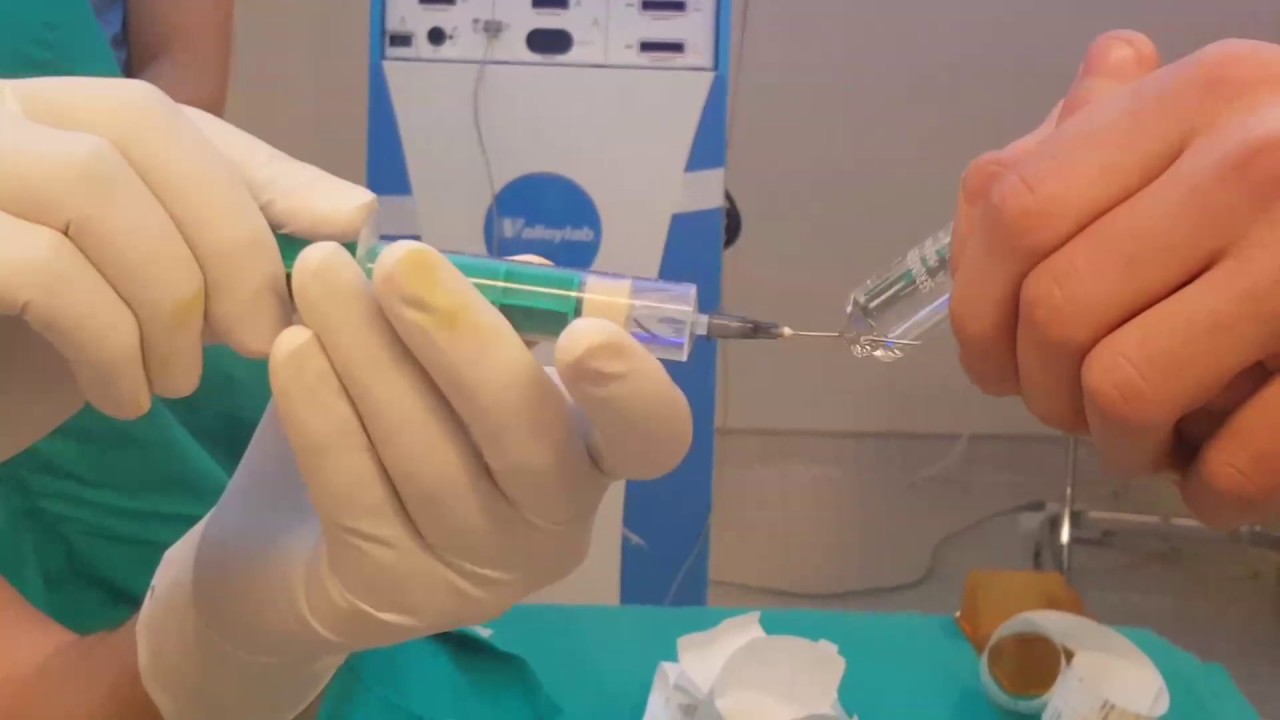Local anesthesia is a type of anesthesia that is widely used, especially in small operations. It is used in many procedures as it ensures that the person does not feel pain without general loss of consciousness. Let’s examine in all details the questions such as what is local anesthesia, how is it done, how long is the effect, is it painful?
Surgical operations are scary for all patients. Even the smallest operation can cause anxiety in unfamiliar people because even a simple procedure like anesthesia has risk factors. Local anesthesia is one of the least risky types of anesthesia because the general consciousness of the patient is not lost in this procedure, only the operated area is anesthetized Thus, it is aimed that the patient does not feel pain.
Local anesthesia is widely used in circumcision, eye, dental, dermatological procedures. Its effect is shorter than general anesthesia and its side effects are much less. In fact, it is sometimes used in such a simple operation that a type that is absorbed from the surface is used instead of an anesthetic needle. Bride What is local anesthesia, how is it done, how long does the effect last, is it painful? Let’s take a closer look and relieve some of your concerns on the subject.
First of all, what is local anesthesia?
The type of anesthesia in which only a certain area of the patient to be treated is anesthetized is called local anesthesia. In this type of anesthesia the patient does not experience a general loss of sensation or consciousness, it is aimed not to feel pain only in the area requiring surgical intervention. It is mostly used in simple surgical interventions performed at a certain point of the patient instead of major operations.
In which surgeries is local anesthesia used?
- Circumcision
- threading
- dental interventions
- I take
- dermatological interventions
- Eye interventions
- Nose interventions
- Throat interventions
Some of the surgeries using local anesthesia are like this, but they have a much wider usage area. Basically only one area is involved and we can say that it is applied in surgeries where different areas other than the intervention area are not affected by this intervention. In other words, it is used in a large part of general surgical operations.

How is local anesthesia done? Types of local anesthesia:
- infiltration
- topical anesthesia
Infiltration:
The type of local anesthesia applied in cases where the anesthesia needs to penetrate the tissue is called infiltration. In this procedure, the anesthetic with the help of a needle It is injected under the skin or superficial skin.
Topical anesthesia:
The type of local anesthesia applied in cases where anesthesia needs to be given by suction from the surface is called topical anesthesia. In this procedure, the anesthetic It is dripped, sprayed or rubbed into a specific area. It is waited for a while and the skin is made to become numb by absorbing this substance. Topical anesthesia is widely used in tooth extraction and other dental interventions.
How long does the local anesthetic effect last?
How long the effect of local anesthesia will last depends on the operation in question. The anesthesiologist applies infiltration, topical anesthesia, or both to the patient. It gives the required amount of anesthetic for that moment. It is waited for 15 minutes for the anesthesia to be effective and the operation begins. In general, local anesthesia is given only in an amount that will act for a short time during and after the operation. In other words, you do not wait for hours to get out of the effect like general anesthesia. Painkillers can be given for the pain to be experienced afterwards.

Does local anesthesia hurt?
If the anesthetic substance required for the surgical operation is injected through infiltration, that is, with a needle if you feel the needle pain. If it is given by topical anesthesia, that is, by suction through the skin, you will not feel any pain. If you feel pain despite the anesthetic because you are awake during the operation, you can report it and wait for the anesthesiologist to intervene. However, in most cases, no pain is felt.
Are there any side effects of local anesthesia, how long does it last?
Regardless of the type of local anesthesia, it often has no side effects because it affects a certain area. However, systemic effects, toxic effects, loss of strength, headache, difficulty in urination, vascular damage and similar side effects can be seen depending on the region, type and amount. It varies from person to person and is sometimes not seen at all. These and similar side effects are seen for a very short time. When such a side effect is seen, you can inform your doctor and ask for an intervention.
It is also necessary to clarify interesting questions such as whether the patient sleeps or gets dizzy in local anesthesia. Whichever type is applied, a local anesthetic is applied. The patient does not sleep and becomes conscious. For example, if local anesthesia is used to remove a mole on your arm, only that area will be numb and the rest of your senses will be open. This is an important reason why its effect is short-lived.

How is local anesthesia removed from the body?
Like any substance we take into our body, local anesthesia eventually is excreted from the body through urine. For this reason, your doctor recommends you to drink plenty of water after the operation. However, sometimes the situation may be different. Instead of general information, it would be best to listen to the recommendations that your doctor will give you.
Is local anesthesia risky?
As in general anesthesia, all your senses or consciousness are not turned off. The risks of local anesthesia are much lower. However, in the end, your body is given a chemical, of course, there is a small risk. In order to avoid such a situation, you should share all your health history, allergies and allergy suspicions with your physician. The type and amount of local anesthesia can be arranged according to the patient’s condition.
What are the differences between general anesthesia, regional anesthesia and local anesthesia?
General anesthesia is used in surgical operations that will affect the whole body and The patient is completely put to sleep and awakened after the operation. Regional anesthesia is the numbing of a larger area, if not the whole body. Local anesthesia, on the other hand, is the numbing of a small spot in a part of the body.
Let’s explain regional and local anesthesia through an example. Let’s say an intervention will be made on your leg, and the intervention will feel pain in a much wider area through the nerves. In this case, regional anesthesia is applied to one leg of the patient or completely below the waist. Let’s say a piece of meat on your leg will be taken from me. This leaves so little pain in the area that local anesthesia is applied only around the mole. In other words, the subject completely changes according to the area where the patient will feel pain.
Widely used in simple surgical operations What is local anesthesia, how long does its effect last, is it painful? We talked about the details you need to know about the subject by answering frequently asked questions. What we describe is for informational purposes only. As with all health issues, remember that you should get the most accurate and specific information from a specialist physician.
